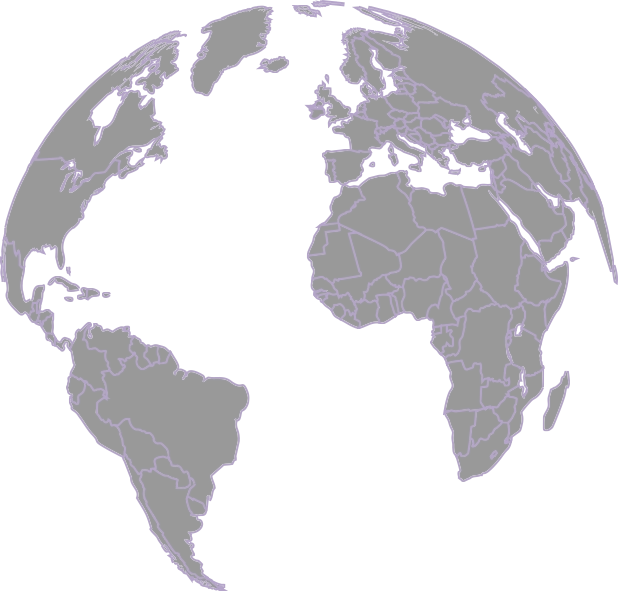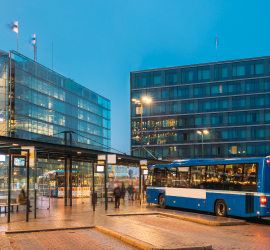For the first time, a joint study by Enel X and Legambiente plots a route to faster carbon disengagement in the maritime sector: a major opportunity for innovation, strengthening of Italy's industrial fabric, and reducing pollution in the country's ports
The study identified six priorities: technological innovation focusing on cold ironing, digitalization, improved energy efficiency during port calls, integration of port-rail interfaces, the phased introduction of renewable energy sources in ports, and support for improvement of ports
and shipping
Decarbonization of maritime transport can make a significant contribution to the fight against climate change, thanks to technological developments, which today enable the electrification of on-board power consumption of berthed ships in addition to on-land logistics and port activities. This is a process which can be speeded up by focusing on technological innovation, digitalization of shoreside logistics systems, improvements to the energy efficiency of port calls, integration of ports and rail networks with the creation of “green corridors”, phased electrification of consuption through the use of renewable energy sources, and the conversion of shipping fleets to energy sources with a lower environmental impact. This is the route to follow if we are to accelerate the decarbonization process, according to Italian environmental association Legambiente and Enel X, the global business arm of the Enel Group. Enel X designs and develops solutions based on the principles of sustainability and the circular economy, offering people, communities, institutions and companies solutions that respect the environment and integrate technological innovation in their everyday lives. The report, entitled “Porti Verdi: the Route to Sustainable Development”, published today during a special webinar and available live on Facebook and the websites of Nuova Ecologia and Legambiente, also reviews the current best practices in the renewable energy sector, the obstacles to overcome, and the development opportunities offered by cold ironing, a technology that enables ships to reduce their emissions while in port by connecting to a terrestrial power grid, which makes it possible to reduce these emissions to zero by cold ironing from renewable sources.
To plot this route, the study identified six priority actions for 2021: 1) Define the tariff applied to cold ironing to enable it to compete with the existing practice of running on-board generators; 2) Introduction of public financing and co-financing mechanisms to accelerate the transition of Italy's ports to a sustainable energy model; 3) Identifying priority actions for rolling out the electrification process in the country's ports; 4) Promoting the phased electrification of port energy sources via renewable energy sources; 5) Plotting a national roadmap for the electrification of the entire port system of Italy. Equipping the 39 Italian ports in the TEN-T network with cold ironing facilities would eliminate the need to burn over 635,000 tonnes of marine gas oil every year; 6) Developing rail infrastructure in ports and improving connections to the rail network, promoting rail transport by electric trains on medium- and long-distance journeys. Each of these measures, if implemented, would make the Italian port system stronger and drive innovation in management models oriented to sustainability. They would also help reduce the pollution caused by shipping, which accounts for a considerable and growing share of greenhouse gas emissions. It is estimated that CO2 emissions by the maritime sector amount to 940 million tonnes every year, or 2.5% of global greenhouse gas emissions. If measures to mitigate this situation are not taken soon, these emissions may increase significantly. According to a study by the International Maritime Organization (IMO), if the current situation remains unchanged, emissions by the maritime transport sector could increase by anywhere from 50% to 250% by 2050, thereby compromising the goals of the Paris Agreement.
The online event was chaired by Edoardo Zanchini, vice-president of Legambiente. The participants: Carlo Tamburi (chairman of Enel Italy), Augusto Raggi (director with Enel X Italy), Eliano Russo (e-Industries manager with Enel X), Cristiana Biondo (climate and energy officer with Legambiente), Tullio Berlenghi (head of the Italian ministry for the environment's technical commission), Giuseppe Catalano (technical structure coordinator for the Italian ministry of infrastructure and transport), Luca Sisto (managing director of Confitarma), Daniele Rossi (chairman of Assoporti and the port authority of Ravenna).
“Maritime transport and port activities, are still heavily dependent on fossil fuels at present,” explains Edoardo Zanchini, national vice-president of Legambiente. “With this study, jointly conducted with Enel X, we wanted to draw attention to the options that can bring about a virtuous cycle of growth and renewal in Italy’s entire port and maritime sector. For years, we have been fighting to reduce the pollution generated by ships docked in urban ports. The time has come to invest in cold ironing, which is now a mature technology, and to improve interfaces with the rail network to create low carbon goods transport supply chains. But there are all kinds of innovative actions that can be taken in the maritime and ports sector to improve sustainability, as shown by the good practices identified by the report: these have already been implemented in various parts of the world where they're banking on technologies and processes for the supply of clean energy, integration of services, improved interaction between ports and local communities, and the use of new, more efficient maritime carriers. Italy cannot miss this precious opportunity to place action against climate change at the heart of our recovery plan.”
“Electrification of maritime transport and port logistics is a step we have to take to add momentum to the energy transition process underway in other industrial sectors,” declared Carlo Tamburi, Director of Enel Italy. “Enel is well on the way towards decarbonizing its own activities, thanks to investment in the production of energy from renewable sources, digitalization of grids, and electrification of consumption. The common denominator in each of these lines of action is sustainability, the pillar on which our business strategy rests. In line with this philosophy, today we are presenting this study carried out in conjunction with Legambiente, which shows how cold ironing is not only a winning option in terms of reducing climate-changing emissions, but also an opportunity for innovation and growth across the entire maritime sector in Italy.”
Prospects for decarbonization: The principal focus of the study is cold ironing, a practice that is attracting increasing attention and interest from port authorities, many of which are now implementing their own electrification projects. In the study, Legambiente and Enel X point out that reducing the carbon dependency of the ports and maritime transport sector, and the associated shoreside logistics services, is one of the priorities listed in the European Sustainable and Smart Mobility Strategy, and an area in which measures urgently need to be taken, in the view of operators and associations like the European Sea Ports Organisation. Even the European Commission has set a target of reducing emissions related with the transport sector by 90% between now and 2050, and as part of its Green Deal package the EU promotes the development of sustainable alternatives to fossil fuels. The study presented today also draws attention to the importance of reducing fossil fuel dependency in maritime transport, and examines the outlook for increased electrification of the sector. Various experiments in electric propulsion technologies on short-haul routes are underway all around the world, and the advantages are clear in terms of the reduction of pollution and climate-changing emissions. So what about zero-emission maritime transport? The report examines various possibilities, including renewable hydrogen, renewable ammonia, and batteries charged by green electricity. Which technology is selected will also depend on the distance each ship has to travel. Battery-powered electric propulsion systems, for instance, could be a reality in the near future in ships traveling on shorter routes. Smaller battery-powered vessels are already in regular service on certain routes in China and Norway. For long-range transport, battery power does not yet look to be a sustainable option, due to the high costs, weight and bulk of the batteries made using the currently-available technology. Without a breakthrough in battery technology, renewable hydrogen and ammonia look like the most viable options right now, although both are a long way from reaching technological or commercial maturity.
Integration of ports and railways: Building a sustainable goods transport supply chain involves integrating port infrastructure with rail infrastructure to make logistics operations more competitive. For this reason Legambiente and Enel X underline the importance of green corridors. Most Italian ports are equipped with an interface to the national rail network, and many of these connections are already electrified. However, if supply chains are to operate efficiently and reduce handling times, streamlined and electrified interfaces must be installed in all the leading ports, along with adequate break-bulk infrastructure in ports and hinterlands. The Italian port of Trieste (with integrated rail links and operator with Monfalcone and Porto Nogaro), where new rail links are now nearing completion, recently topped a capacity of 2 million TEU per year. Most of the goods handled by Trieste are destined for Austria (and on to northern Europe), Slovenia (and on to eastern Europe) and the Italian cities of Padua and Milan. The port of Trieste has six tracks measuring 750 meters in length for assembling trains, and sees 200 trains pass through it every week, making it Italy's leading port for non-EU goods and rail freight.
Best practices around the world: Various implementations of cold ironing have shown it to be an innovative solution for reducing carbon emissions by ships while docked. Among the cases worth mentioning are Gothenburg (Sweden), Rotterdam (Netherlands), Los Angeles (USA), Vancouver (Canada), Lübeck (Germany), Bergen (Norway) and Marseille (France). To take just one example, the port of Gothenburg was equipped with a cold ironing system as early as 1989, and today the entire port is served by a total of six cold ironing units (with another under construction). In France, in 2017, the port of Marseille installed three cold ironing terminals for ferry ships, and under a new 22 million euro investment plan the port plans to become 100% electric by 2025. Installation of the cold ironing facilities in Marseille was funded by the EU and the French government. The port of Los Angeles - the biggest commercial port in the western hemisphere - is one of the leading global players in cold ironing. The first cold ironing facilities were installed there in 2004 with assistance from the California Environmental Protection Agency, which has also underwritten the gradual expansion of the technology in the port. In 2007, Los Angeles passed new regulations on the reduction of particulate and nitrogen oxide emissions in its port, and cold ironing has proved to be a valuable solution for complying with the new requirements.
Enel X is the Enel Group global business line that designs and develops products and services focused on the principles of sustainability and circular economy, to provide people, communities, institutions and companies with an alternative environmentally friendly model that integrates technological innovation in daily life. The company is a global leader in the world of advanced energy solutions, managing services such as demand response for over 6 GW of total capacity worldwide and has approximately 116 MW of installed storage capacity worldwide, as well as being a leader in the e-mobility sector with over 170,000 public and private charging points for electric vehicles available worldwide.
Find out more on www.enelx.com and follow Enel X on social media:
LinkedIn: @EnelX
Twitter: @EnelXGlobal
Facebook: @enelxglobal
Instagram: @enelxglobal



